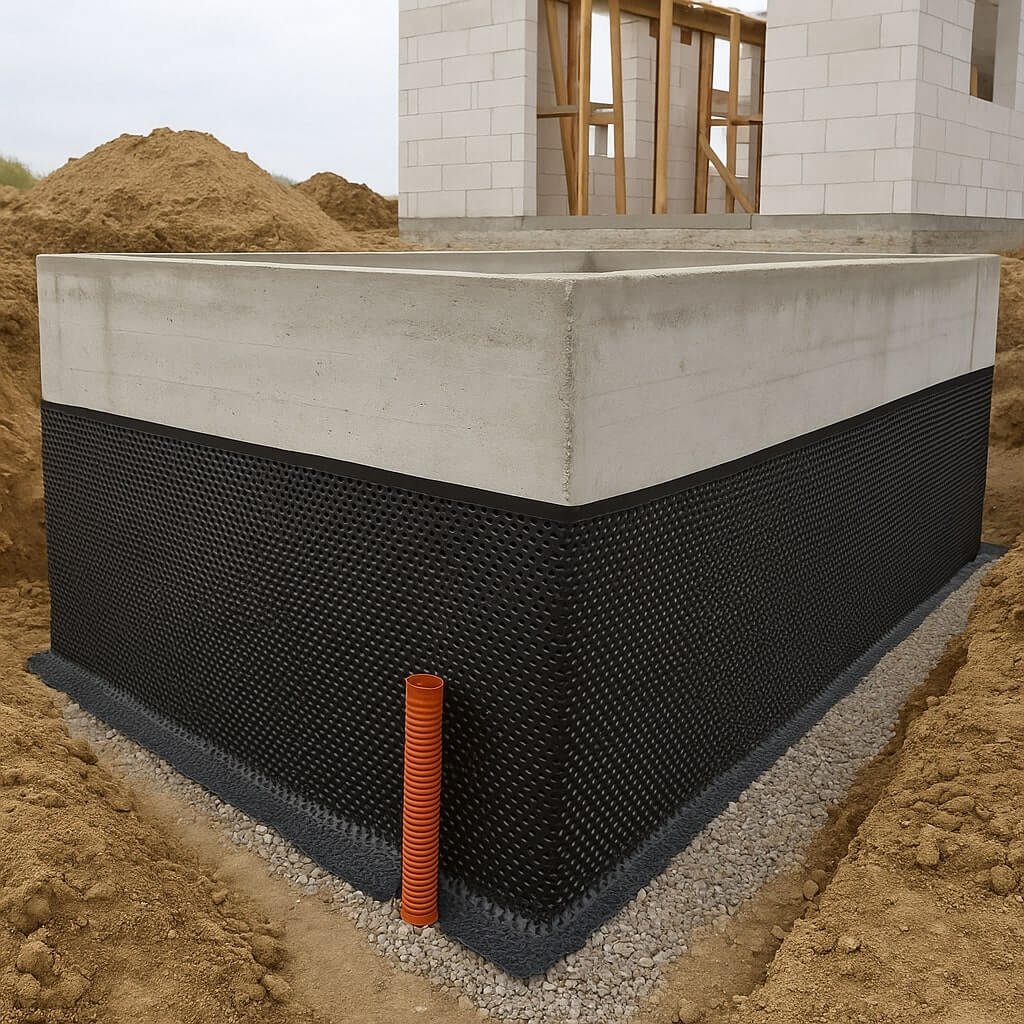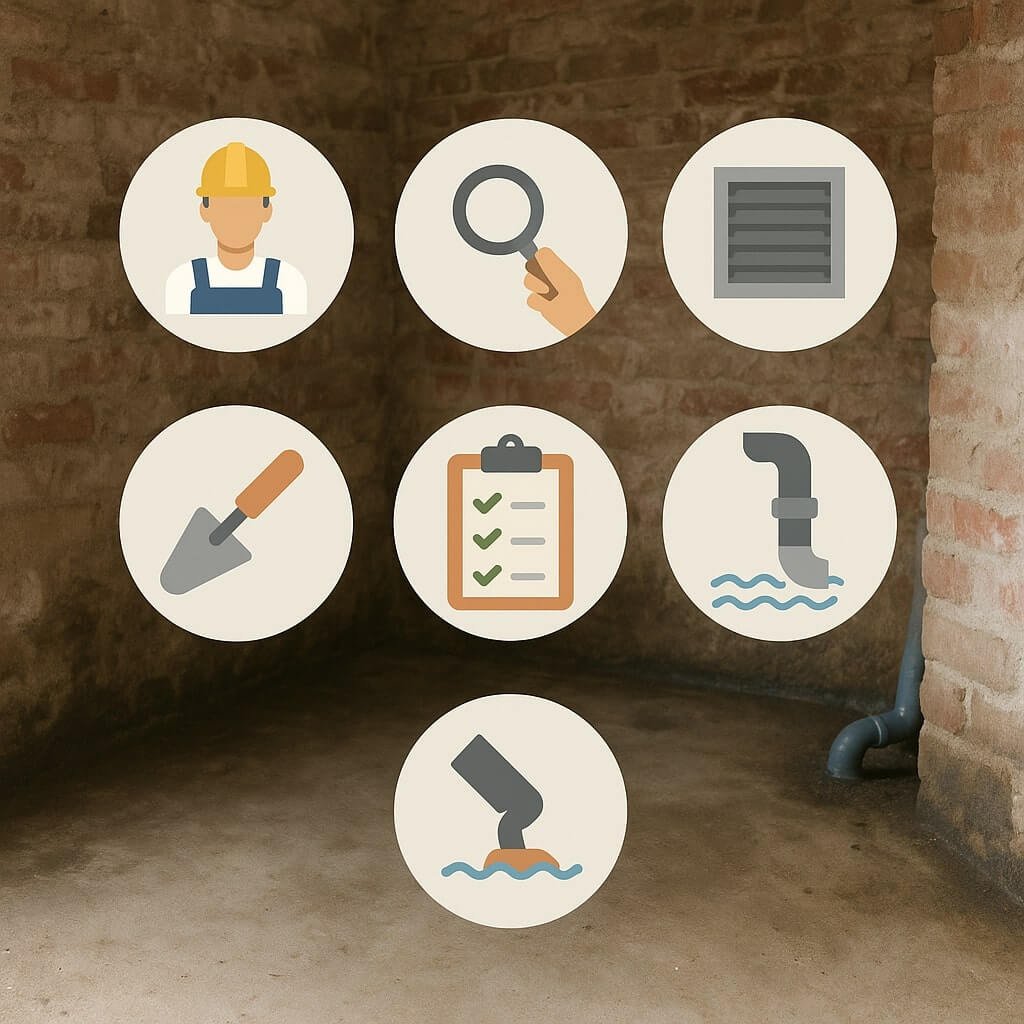When it comes to basement waterproofing, understanding real-life case studies can provide valuable insights for your own challenges. These success stories showcase a range of innovative solutions, from advanced drainage systems to strategic landscaping adjustments. Each case highlights tailored approaches that not only combat moisture but also enhance property value and air quality. Discover how these homeowners tackled their unique issues and what you can learn from their experiences to protect your own home.
Key Takeaways
- Successful case studies often showcase the effective use of interior waterproofing techniques to manage water intrusion quickly and efficiently.
- Many projects highlight the integration of modern waterproofing solutions, including advanced sealants and drainage systems, for long-term moisture control.
- Homeowners have benefited from retrofitting waterproofing systems, demonstrating enhanced foundation protection through sump pumps and waterproof membranes.
- Innovative drainage solutions, such as perimeter drains and French drains, have proven effective in managing high water table challenges during real-life applications.
- Effective landscaping techniques, including proper grading and swale installation, have improved overall basement waterproofing and reduced water pooling around foundations.
Case Study 1: Transforming a Flood-Prone Basement Into a Dry Storage Area
When you’ve got a basement that floods regularly, it can feel like an insurmountable problem, but transforming that space into a dry storage area is entirely achievable with the right approach.
Start by evaluating your flood prevention measures: install a sump pump, seal cracks, and use waterproofing paint.
Next, consider elevating your storage solutions off the floor with shelves or plastic bins to protect your items.
Proper ventilation is essential, so install a dehumidifier to reduce moisture.
Case Study 2: Innovative Drainage Solutions for a Family Home

In this case study, you’ll identify specific water intrusion issues affecting your family home and assess their impact.
Once you understand the problem, you can implement innovative drainage solutions tailored to your needs.
Problem Identification and Assessment
Identifying and evaluating drainage issues in a family home can often reveal underlying problems that contribute to basement waterproofing challenges.
Start with moisture detection, using specialized tools to pinpoint areas with excessive humidity or water intrusion. Conduct a thorough structural analysis to evaluate the integrity of the foundation and walls.
Look for cracks, efflorescence, or signs of previous water damage. Understanding these factors helps you develop a detailed picture of the drainage deficiencies.
Implementation of Drainage Solutions
With a clear understanding of the drainage issues affecting the home, implementing effective drainage solutions becomes the next step.
You’ll want to install a robust drainage system designed to direct water flow away from the foundation. Begin with perimeter drains, guaranteeing they’re sloped correctly to prevent pooling.
Consider adding a sump pump to manage excessive water accumulation, especially during heavy rains. Additionally, incorporating a French drain can enhance water flow management in vulnerable areas.
Regular maintenance of these systems is essential to secure peak performance and longevity, providing peace of mind and safeguarding your home against future water damage.
Case Study 3: The Impact of Interior Waterproofing Techniques
Although many homeowners focus on exterior solutions for basement waterproofing, interior waterproofing techniques often provide effective and immediate results.
These methods not only address water intrusion but also enhance overall home comfort.
Interior waterproofing techniques effectively tackle water issues while significantly improving the comfort of your home.
Here are some notable waterproofing benefits of interior techniques:
- Fast application and results
- Cost-effective compared to exterior options
- Ability to manage minor leaks
- Improved air quality by reducing mold and mildew
- Minimal disruption to landscaping
Case Study 4: A DIY Approach to Basement Waterproofing Success
When tackling a DIY basement waterproofing project, you’ll need to focus on thorough preparation and planning to guarantee success.
Gather essential tools and materials that meet your specific needs, and familiarize yourself with effective techniques to keep water at bay.
Preparation and Planning Steps
Before diving into a DIY basement waterproofing project, it’s essential to establish a well-thought-out plan.
Start by addressing budget considerations and ensuring you have adequate funds for all necessary materials.
Next, focus on material selection to avoid future complications.
Here’s a checklist to guide your preparation:
- Assess the current condition of your basement
- Research waterproofing methods suitable for your situation
- Create a detailed project timeline
- Gather accurate measurements of your basement space
- Obtain necessary permits or consult local regulations
Essential Tools and Materials
Successful basement waterproofing hinges on having the right tools and materials at your disposal.
Start with essential tools like a waterproofing paint sprayer, trowel, and utility knife. You’ll need a reliable wet/dry vacuum to remove any standing water.
For waterproofing materials, consider high-quality sealants, waterproofing membranes, and drainage mats. Don’t forget to stock up on concrete patching compounds for repairs.
Having a sturdy ladder and safety gear is vital too.
With these essential tools and waterproofing materials on hand, you can confidently tackle your basement project, ensuring a dry and safe environment for years to come.
Techniques for Effective Waterproofing
Having the right tools and materials lays the groundwork for effective waterproofing, but applying the right techniques is what truly makes the difference.
To achieve a successful DIY basement waterproofing project, focus on these key techniques:
- Choose high-quality waterproofing materials for sealing cracks.
- Install efficient drainage systems to redirect water away.
- Verify proper sloping around your foundation to prevent pooling.
- Use a waterproof paint or sealant on interior walls.
- Regularly inspect and maintain your waterproofing measures.
Case Study 5: Overcoming High Water Table Challenges
While dealing with a high water table can seem intimidating, many homeowners have successfully navigated this challenge through targeted waterproofing strategies.
Effective water table management is essential; implementing exterior drainage systems can redirect groundwater away from your foundation. Adding perforated drain tiles around the perimeter collects excess water and channels it to a sump basin.
Additionally, utilizing waterproof membranes on foundation walls prevents moisture intrusion. These groundwater solutions not only alleviate immediate flooding concerns but also enhance your basement’s long-term durability.
Case Study 6: Utilizing Sump Pumps for Effective Water Management
When managing water in your basement, sump pumps play an essential role in preventing flooding and moisture buildup.
Proper sump pump installation can dramatically enhance your water management strategies. Here’s how effective sump pumps can transform your basement:
- Automatically remove excess water
- Reduce humidity levels
- Prevent mold growth
- Protect your foundation
- Increase property value
Case Study 7: a Historic Home’s Revival With Modern Waterproofing
When restoring a historic home, you’re likely to encounter unique challenges related to moisture management.
Implementing modern waterproofing solutions not only preserves the structural integrity but also enhances the home’s longevity.
You’ll see the lasting impact of these strategies in improved air quality and reduced maintenance needs.
Historical Home Challenges
As you navigate the complexities of restoring a historic home, the challenges of waterproofing often emerge as a critical concern.
Balancing historical preservation with modern needs isn’t easy, especially when you aim to maintain architectural integrity. You must consider various factors:
- Assess existing drainage systems and their effectiveness
- Identify vulnerable areas prone to water intrusion
- Select materials that align with historical aesthetics
- Evaluate potential impact on structural elements
- Guarantee compliance with preservation guidelines
Addressing these challenges effectively helps safeguard your investment and enhances the longevity of your cherished historic property.
Modern Solutions Implemented
Restoring a historic home often requires innovative approaches to waterproofing that respect both its character and structural integrity.
You can implement modern techniques like interior drainage systems, coupled with innovative materials such as high-performance waterproof membranes. These solutions effectively channel water away from the foundation while preserving the home’s aesthetic.
Utilizing vapor barriers and advanced sealants guarantees that moisture doesn’t penetrate walls, safeguarding original finishes.
Additionally, integrating sump pumps with smart technology enhances drainage efficiency.
Lasting Impact Observed
While tackling the challenges of water intrusion in a historic home, the integration of modern waterproofing solutions made a significant difference in its preservation.
You’ll notice lasting benefits that enhance both the structure and livability, ensuring the home remains intact for generations.
- Improved air quality
- Increased property value
- Prevention of mold growth
- Enhanced structural integrity
- Long term solutions that withstand weather extremes
These solutions not only address immediate concerns but also provide a foundation for future care, ensuring the home’s revival and longevity in the face of potential water damage.
Case Study 8: Landscaping Solutions to Divert Water Away
Effective landscaping can be a powerful ally in managing water flow around your property, especially when you face persistent moisture issues in your basement. By implementing landscape grading and adjusting drainage patterns, you can effectively divert water away from vulnerable areas.
| Technique | Description | Benefit |
|---|---|---|
| Grading | Adjust soil slope away from the foundation | Reduces water pooling |
| Swales | Shallow ditches to direct runoff | Controls water flow |
| French Drains | Perforated pipes to collect water | Prevents basement flooding |
| Plant Selection | Deep-rooted plants for moisture absorption | Enhances soil stability |
Utilizing these strategies can greatly improve your basement’s waterproofing.
Case Study 9: Retrofitting for Enhanced Waterproofing

When you’re dealing with persistent moisture issues in your basement, retrofitting your waterproofing system can provide a thorough solution.
Addressing ongoing moisture problems in your basement? Retrofitting your waterproofing system offers an effective solution.
This process can effectively enhance your home’s defense against water infiltration.
Consider these retrofitting techniques and waterproofing materials:
- Installing interior drainage systems
- Applying waterproof sealants and membranes
- Using sump pumps for efficient water removal
- Implementing exterior drainage solutions
- Reinforcing foundation walls with added barriers
Case Study 10: Lessons Learned From a Complete Basement Remodel
As you commence on a complete basement remodel, it’s essential to integrate waterproofing solutions from the outset to prevent future moisture issues.
Employing advanced remodeling techniques, like installing a drainage system and vapor barriers, guarantees long-term protection.
Design considerations should include elevated flooring and strategically placed windows to enhance air circulation.
Use materials resistant to moisture and mold, such as fiberglass insulation and waterproof drywall.
Incorporating sump pumps can further manage groundwater levels.
Conclusion
To summarize, these ten case studies illustrate the effectiveness of tailored basement waterproofing solutions. By implementing advanced techniques and strategic landscaping, homeowners successfully mitigated moisture issues, enhancing both their property’s value and living conditions. Each approach highlights the importance of addressing specific challenges, from high water tables to historic preservation. Ultimately, these success stories serve as a blueprint for anyone facing similar waterproofing concerns, proving that with the right strategies, a dry, safe basement is achievable.




